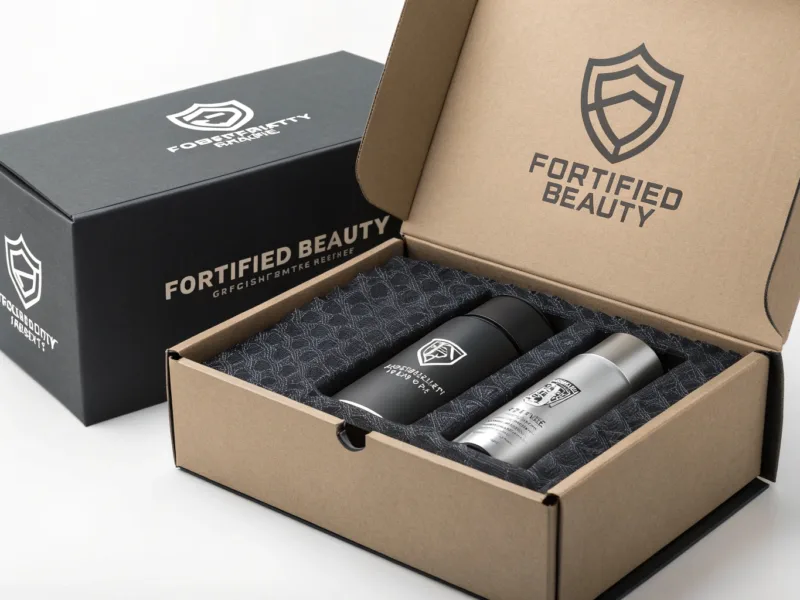
Is your business losing money from products arriving damaged? Customers are frustrated, your reputation suffers, and the cost of replacements and refunds is eating into your profits. This is a common shipping nightmare.
You can fortify your packaging by using sturdy corrugated boxes, custom-fit internal inserts, and appropriate void fill. Combined with strong sealing and optimized box sizes, these strategies create a protective system that withstands the harsh realities of shipping.
Damaged products are a fixable problem. As Andrew Zhuo from Finer-Packaging, I have helped countless brands create packaging that not only looks beautiful but also survives the journey to the customer's doorstep. We are going to break down the essential steps to protect your investment and ensure a happy unboxing experience every time.
What Materials Provide the Best Outer Protection?
You are using a standard thin box, assuming it's good enough. But then you get emails about crushed corners and damaged goods, forcing you into costly refunds and replacements.
The best outer protection comes from using sturdy, corrugated cardboard with high burst strength and crush resistance. Sealing it properly with strong tape and considering double-boxing for fragile items creates a a formidable external shield for your products.
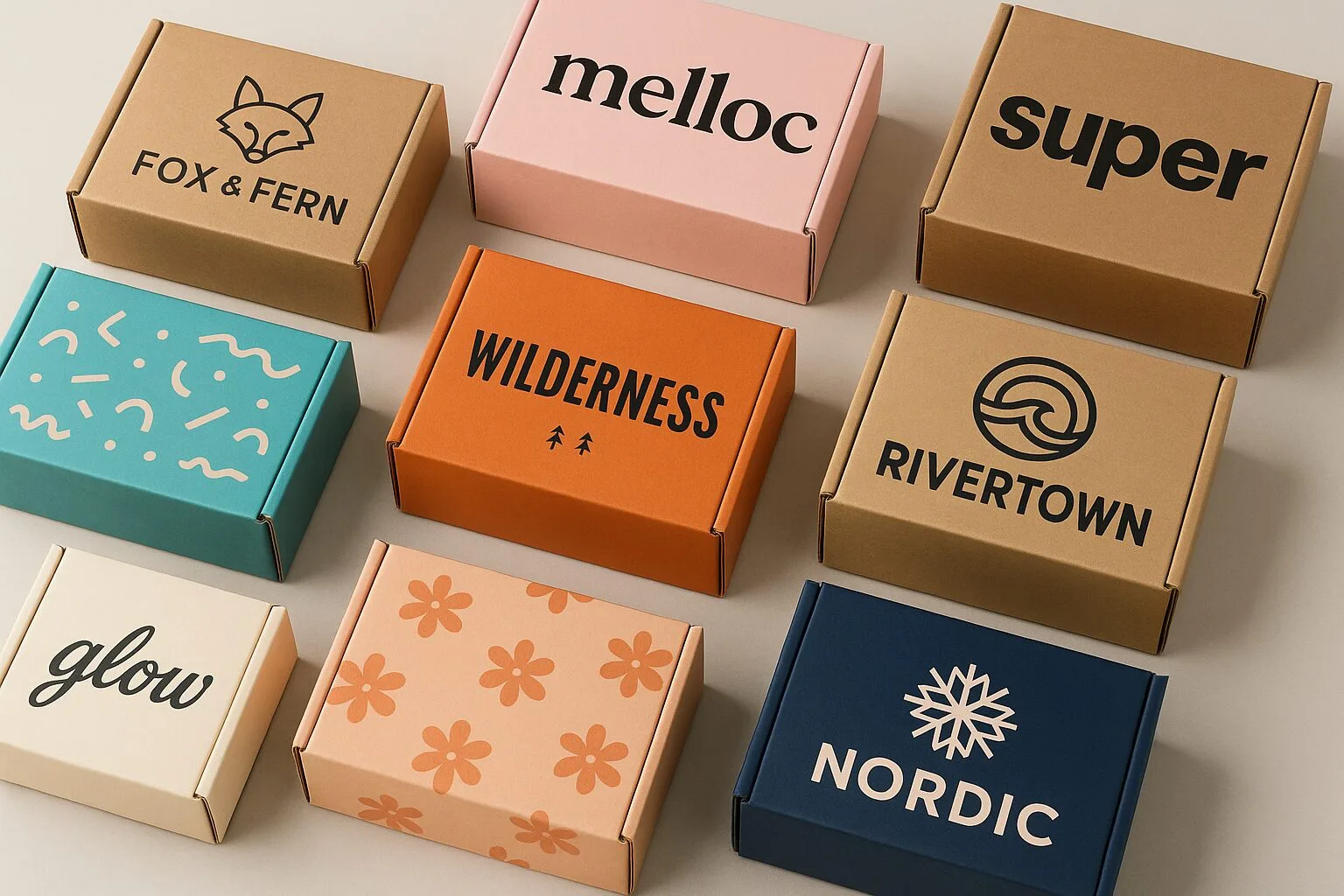
The outer shipping box is your product's first line of defense. It has to endure being dropped, stacked, and jostled in transit. Choosing the right materials for this external layer is not an area to cut costs. A few cents saved on a weaker box can cost you many dollars in damaged goods. Think of this outer carton as the armor plating for your valuable products. Its job is to absorb impacts and resist pressure so that the beautiful primary packaging inside remains pristine. At Finer-Packaging, we always guide our clients to start with a strong foundation.
Understanding Corrugated Cardboard
Not all cardboard is created equal. For shipping, you need corrugated cardboard. This material isn't just a single layer of paper; it's constructed with a fluted (wavy) layer sandwiched between two flat linerboards. This structure provides impressive rigidity and cushioning. The strength of these boxes is often measured by two key metrics:
- Burst Strength: This measures the force required to rupture or puncture the wall of the box. A higher burst strength means it's more resistant to being pierced by sharp objects or rough handling.
- Edge Crush Test (ECT): This measures the stacking strength of the box. A higher ECT rating means the box can withstand more weight stacked on top of it before it collapses. This is crucial for brands that ship in bulk or whose packages will be at the bottom of a pallet in a warehouse.
| Box Strength Metric | What It Measures | Why It Matters for Beauty Products |
|---|---|---|
| Burst Strength | Resistance to puncture or bursting | Protects against sharp impacts during sorting and transit. |
| ECT (Edge Crush) | Stacking strength | Prevents boxes from being crushed when stacked in trucks or warehouses. |
The Importance of Sealing and Reinforcement
A strong box is useless if it opens up during transit. Using cheap, thin tape is a common mistake that can lead to disaster. You need a strong, high-quality packing tape that is at least 2 inches wide. Applying it using the "H-tape" method is the professional standard. This means you seal the center seam where the top flaps meet, and then you seal both of the edge seams. This creates a secure "H" pattern that reinforces the box's structure and prevents accidental openings. For very fragile or heavy cosmetic items, such as large glass bottles of lotion, consider the double-boxing method. This involves placing your primary product box inside a slightly larger shipping box, with cushioning material like crumpled paper or air pillows filling the space between the two. This creates an absorption zone that provides an exceptional level of protection against even the most severe impacts.
How Can You Secure Products Inside the Box?
You have a strong outer box, but your products are still moving around inside. This shifting leads to scuffs on your beautiful primary packaging and can even cause fragile items to break.
You secure products by using custom inserts to hold them snugly in place. Then, you eliminate any remaining empty space with void fill materials. Optimizing the box size is also crucial to minimize movement from the start.
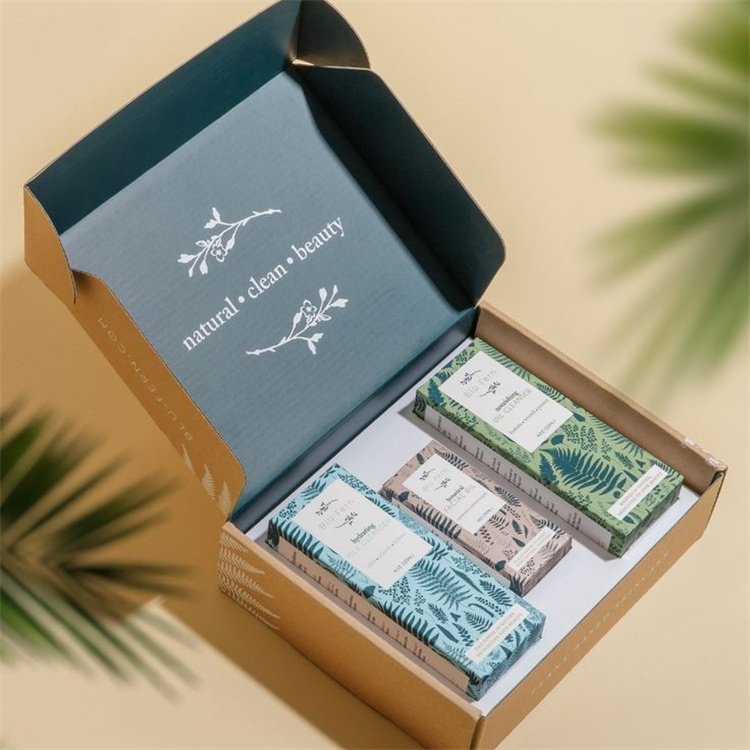
What happens inside the box is just as important as the strength of its outer walls. An empty space inside a shipping box is your enemy. Every time the package is moved or dropped, your product can slide, tumble, and collide with the inner walls. This movement is what causes cosmetic damage like scuffs and scratches, and it's the primary cause of breakage for fragile items like glass jars or compacts. The goal is to create a secure environment where your product is completely immobilized, locked in place from the moment you seal the box until your customer opens it. This complete immobilization is the secret to ensuring your product arrives in perfect, shelf-ready condition.
Custom Inserts: The Ultimate Solution
The single most effective way to prevent movement is with custom inserts or fitments. These are specifically designed to the exact shape and size of your product, holding it snugly. They act like a custom-molded glove. We can create these from several materials, depending on your budget and desired aesthetic.
- Corrugated Inserts: Cost-effective and strong. They can be folded into complex shapes to hold bottles, jars, and tubes securely.
- Molded Pulp Inserts: An eco-friendly option made from recycled paper. They have a raw, organic look and provide excellent cushioning.
- Foam Inserts (EVA, EPE): Offer the highest level of protection and have a very premium feel. The foam is custom cut to cradle your product, making it ideal for high-end, extremely fragile items.
The Role of Void Fill and Box Optimization
Even with inserts, you might have some empty space, especially if you are shipping multiple items in one box. This is where void fill comes in. Void fill materials are designed to fill these gaps and provide extra cushioning. Common options include air pillows, packing peanuts, or crumpled kraft paper. The idea is to pack the box tightly enough that nothing can shift. However, relying too heavily on void fill can be a sign that your outer box is too large. Optimizing your box size is a key step. The box should be large enough to comfortably accommodate your product and any necessary inserts or cushioning, but no larger. A smaller, well-fitting box not only reduces the amount of void fill you need but can also lower your shipping costs, as carriers often charge based on dimensional weight.
Are Your Primary Product Containers Secure Enough?
Product is leaking inside the box, creating a mess. It ruins the packaging, damages other items in the shipment, and creates an awful unboxing experience for your frustrated customer.
Your primary containers must be absolutely leak-proof and robust. Choose high-quality jars and bottles with secure closures. Then, supplement their protection by using "Fragile" labels, but never rely on labels alone as your primary defense.
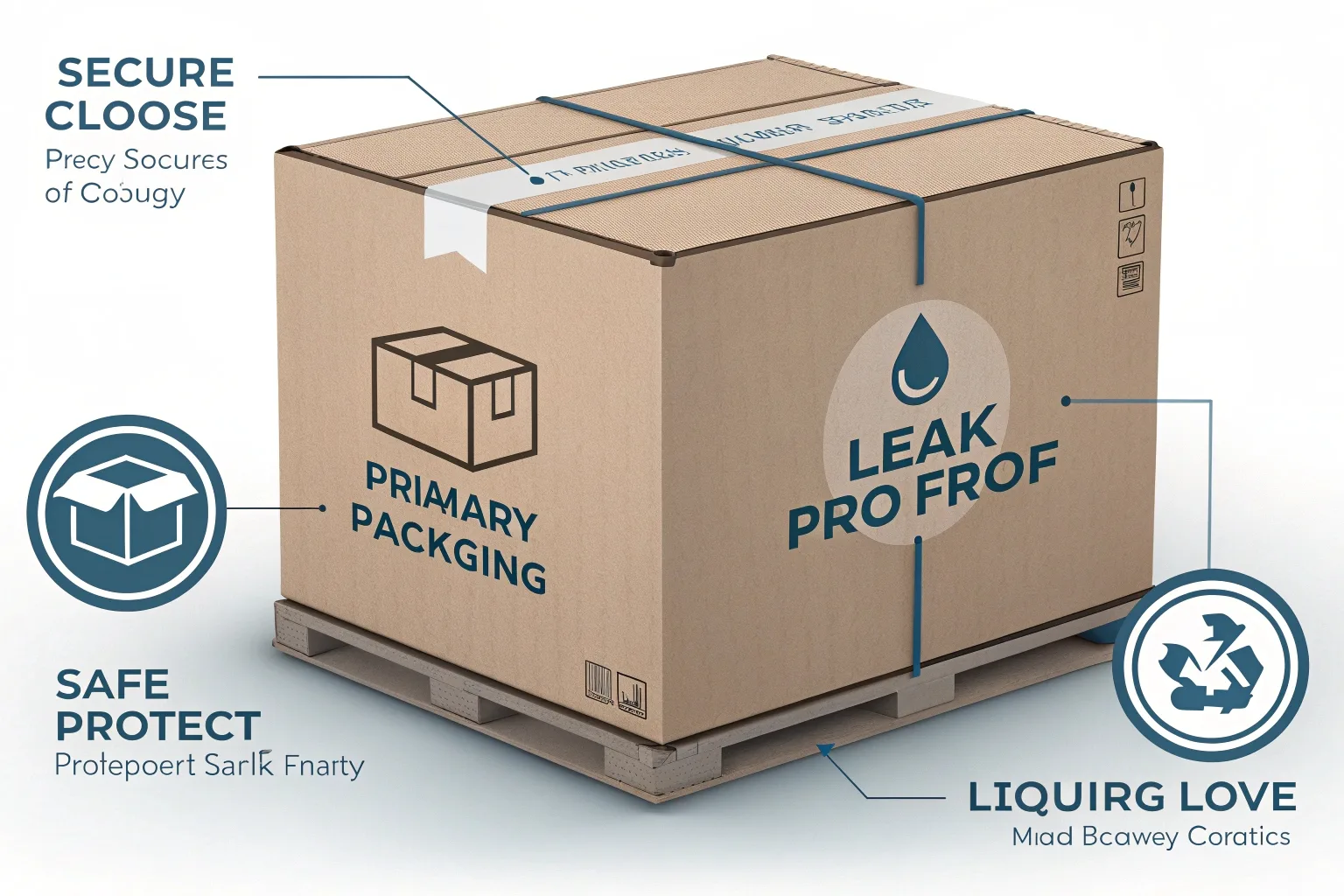
Before we even place a product into a shipping box, we have to consider the integrity of the product's own container. For beauty products, especially liquids, creams, and serums, the primary packaging—the bottle, jar, or tube—is the last line of defense against leaks. A small leak can turn a customer's unboxing experience into a sticky, greasy mess. It instantly destroys the perceived value of your product and brand. The robustness of your primary packaging is not just a cosmetic choice; it's a critical component of your shipping strategy. A beautiful glass jar is useless if its lid loosens during transit and the contents spill out.
Ensuring Leak-Proof and Robust Containers
When sourcing your primary packaging, you must prioritize quality closures. For items like lotions or foundations, look for pumps that lock or have separate clips to prevent accidental dispensing. For jars containing creams, ensure the lids have a tight-fitting liner that creates a strong seal against the rim. The material of the container itself also matters. If you're using glass, make sure it's thick and durable enough to withstand minor bumps. If you're using plastic, choose a resin that won't crack under pressure. It's often a good practice to test this yourself. Fill a container with product, seal it, and shake it vigorously. Drop it from a short height. Leave it on its side overnight. If it shows any sign of leaking, you need a better container. It's better for you to discover a weakness than for your customer to.
The Truth About "Fragile" Labels
Many brands believe that slapping a "Fragile" or "Handle With Care" sticker on their box will solve their problems. This is a dangerous misconception. While these labels can be a helpful signal to conscientious handlers, you must operate under the assumption that they will be ignored. Automated sorting systems, conveyor belts, and busy workers do not have time to treat every labeled box with special care. These stickers should be seen as a supplement to your packaging strategy, not the cornerstone of it. Your internal protection plan—sturdy boxes, inserts, and void fill—is what actually does the work of protecting your product. The label is simply a final, hopeful request. Relying on it as your only line of defense is a recipe for broken products and unhappy customers. Always package your items as if the "Fragile" sticker does not exist. That is the only way to be certain they will arrive safely.
How Do You Test and Validate Your Packaging Strength?
You've designed what you think is the perfect protective packaging. You ship out a large batch, only to discover a critical flaw when the customer complaint emails start pouring in.
You must validate your packaging through real-world testing before any mass production or shipment. Conducting systematic drop tests and shipping simulations allows you to identify and correct any weak points in a controlled environment, saving you money and protecting your brand.
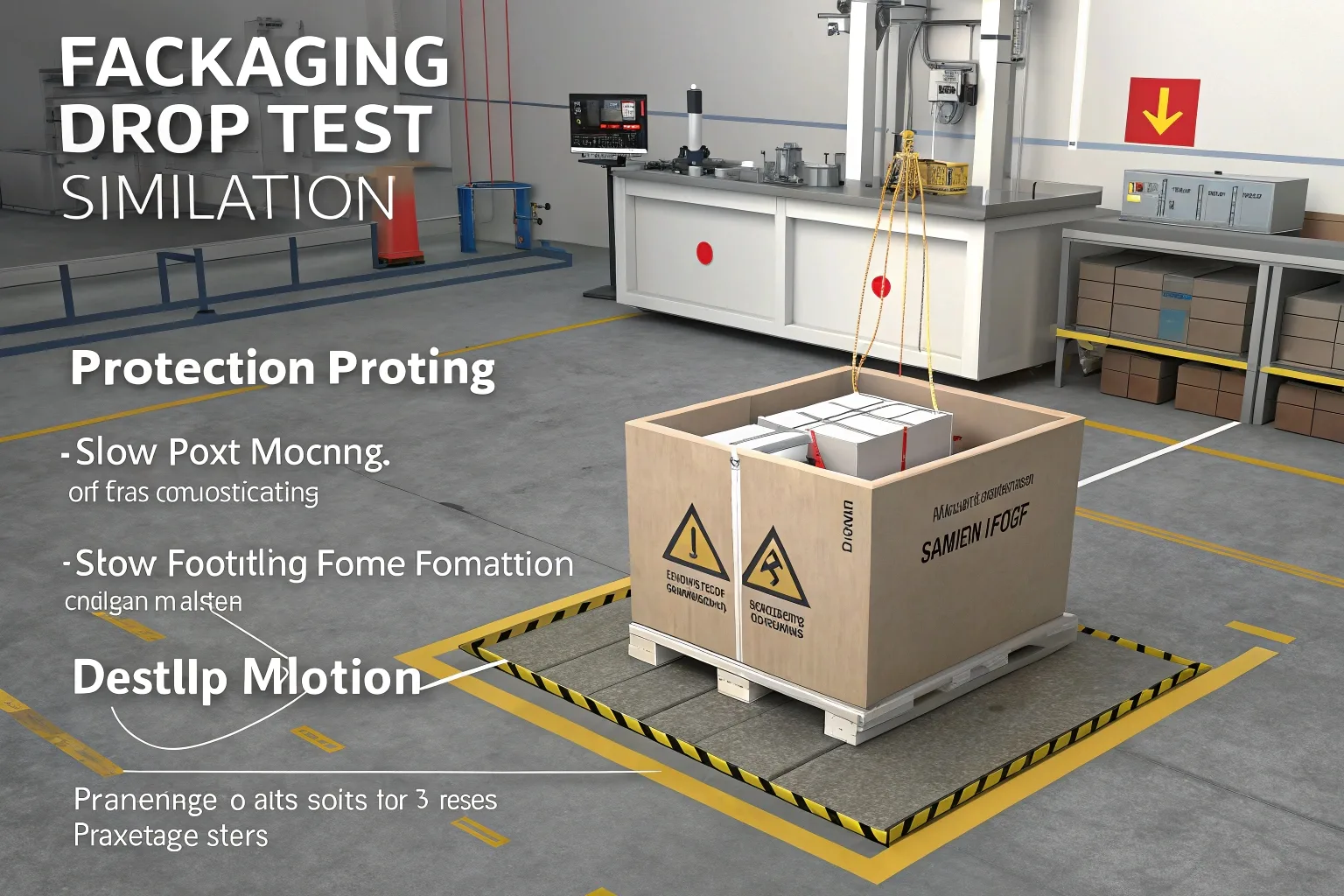
Designing a protective packaging system based on theory is one thing. Confirming that it actually works in the chaotic reality of modern logistics is another. Hope is not a strategy. Before you invest in thousands of custom boxes and inserts, you absolutely must test your design. Finding a weakness yourself during a test costs you one sample. Finding that same weakness after shipping 500 orders costs you dearly in both money and brand reputation. At Finer-Packaging, we strongly encourage all our clients to go through a validation process. This step removes guesswork and replaces it with data, giving you the confidence that your products will arrive exactly as you intended.
Conducting Effective Drop Tests
A drop test is a simple but incredibly valuable simulation. The goal is to simulate the most common and damaging impacts a package experiences. The International Safe Transit Association (ISTA) has standards for this, but you can conduct a basic and effective version yourself.
A Simple Drop Test Procedure:
- Prepare a Test Package: Pack your product in your proposed packaging exactly as a customer would receive it.
- Choose a Height: A common height for packages of this size and weight is around 30-36 inches (about waist height). This simulates being dropped by a person or falling off a conveyor belt.
- Perform the Drops: Drop the package on a hard surface, like concrete. You should test all angles to find the weakest point. A good sequence is:
- Drop it flat on its base.
- Drop it on its most vulnerable corner.
- Drop it on three different edges.
- Drop it on each of its flat faces.
- Inspect the Damage: After the sequence of drops, open the package. Carefully inspect the outer box, the inner packaging, and most importantly, the product itself. Look for any signs of stress, cracking, leaking, or cosmetic damage.
The Value of Shipping Simulations
While a drop test is good, a real-world shipping simulation is even better. This is as simple as it sounds. Mail a fully packed product to yourself, a colleague, or a friend across the country. Have them mail it back to you. This process exposes the package to the entire logistics chain: multiple carriers, sorting facilities, temperature changes, and vibrations in trucks and planes. When you receive the package back, you can see how the entire system held up. Did the tape stay sealed? Did the insert keep the product secure? Did the outer box show significant wear? This simple, inexpensive test provides invaluable insight into how your packaging will perform in the real world before you commit to a large-scale order.
Conclusion
Fortifying your packaging is an investment in your brand's reputation and profitability. By using strong outer materials, clever internal security, and rigorous testing, you can eliminate shipping nightmares and delight your customers.






